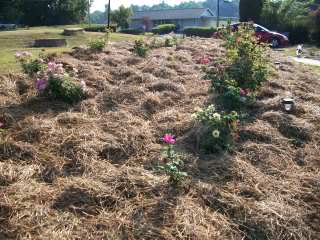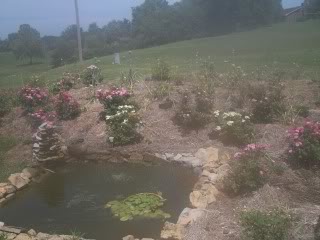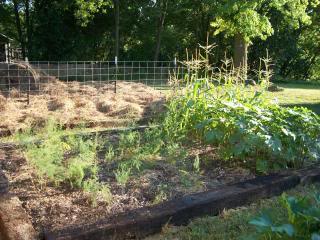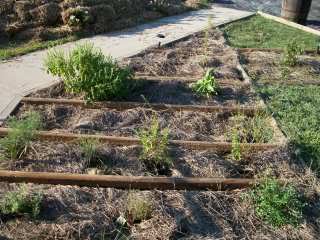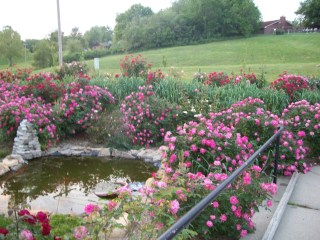I was wondering what that green swathe was. How well they work to repel aphids? Just curious - I'm not going to start growing roses. My mum used to grow them and I always think of the thorns.
I think the garlic repels aphids pretty well, I haven't seen any.
And I know you are wondering what I did with a bushel of garlic bulbs aren't you?

I washed, and cleaned them before sticking them in zip-lock bags in the freezer!

All winter long, I enjoyed being able to just take out a few cloves for the beef stew, or the chicken tetrazzini, or whatever. No peeling for me, cause I had done all the work before!

I found out recently that the wild garlic I have is a Rocombole variety and what to do with the scapes!
All garlic varieties produce a stem, but it's the hardneck Rocombole garlics that send out the curling scapes that gave them the nickname ‛serpent garlic'. There are many types of Rocombole and the flavor of the scapes can vary considerably from variety to variety, just as with garlic bulbs. But if you have a favorite variety of garlic that grows well in your garden, you will probably enjoy its scapes.
When to Harvest Garlic Scapes
When the scapes are just starting to poke up above the leaves, they are tender enough to eat fresh. Garlic scapes get tougher, the longer they grow. Although they twist and turn and look wonderfully exotic as they grow, they become hotter and more fibrous, requiring some gentle cooking before eating. I tend to cut mine as they are starting their first circle to get the most balanced flavor.
Cut, don't pull, the scapes from the plant. The plant will probably ooze a bit, but that will stop when the sun warms it and seals the cut.
Keep in mind that you do not have to cut the scapes at all. Your garlic will still form a bulb, it just won't be as large as it might have been. Some gardeners argue that leaving the scapes on results in a longer storing garlic bulb.
How to Use Garlic Scapes
If you harvest your scapes young and tender, you can chop them into salads or use them as a topping, like scallions. More mature scapes can be sauteed lightly and used over pasta, with eggs, mixed with cooking greens, pickled or pretty much in any dish that would be complemented by garlic. My favorite way to use them is to make a garlic scape pesto. I've listed some great recipes to get the juices flowing, below.
There are a lot of scape recipes on the internet too!
What are Garlic Scapes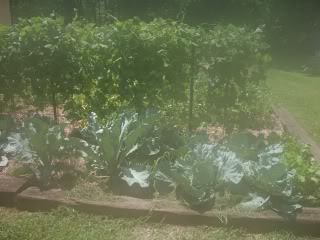


 Arthuritis is kicking my butt!
Arthuritis is kicking my butt!
